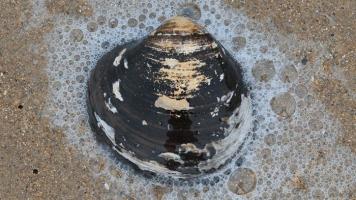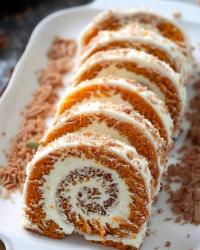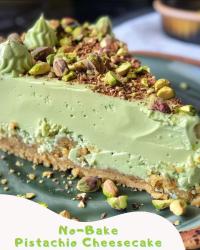Copy Link
Add to Bookmark
Report
HOMEBREW Digest #3266

HOMEBREW Digest #3266 Tue 07 March 2000
FORUM ON BEER, HOMEBREWING, AND RELATED ISSUES
Digest Janitor: janitor@hbd.org
Many thanks to the Observer & Eccentric Newspapers of
Livonia, Michigan for sponsoring the Homebrew Digest.
URL: http://www.oeonline.com
Contents:
Brief outtage... (The Home Brew Digest Janitorial Staff)
fridge compressor duty cycle ("Paul E. Lyon")
nips (Tombrau)
Re: Sam Adams Hops (Joseph Gibbens)
Science ("Paul Niebergall")
Wort collection manifolds (Joseph Gibbens)
Yeast starter ("Bryant, Jerry")
Need to find out Cooker Manufacturer ("Branam, Mike")
Carboys for primary again ("Matt Hollingsworth")
unearned hangovers ("Sean Richens")
Paleexperiment ("John Lifer, jr")
Re: Palexperiment questions (KMacneal)
On-Line Entries for 2nd Annual Palmetto State Brewers Open ("H. Dowda")
Sake koji ("Glen Pannicke")
teflon hose (bmahon)
YCKCo (Doniese)
malta--again (Rick Lassabe)
British Homebrewing ("John Herman")
large starters ("George de Piro")
The Jethro Gump Request ("Rob Moline")
FWH (Bob Wilcox)
re: NOT! ("Nathaniel P. Lansing")
Ferm chamber ("Steve Bireley")
Still more on Palexperiment (Louis Bonham)
English practice ("Paul Smith")
Class Is Back To Normal ("Phil & Jill Yates")
Beginning all grain brewing ("Murray, Eric")
Head Start Brewing Cultures ("Bill Bunning")
One PAE Data Point ("Troy Hager")
Get Your Questions Answered at MCAB! (RBoland)
* Beer is our obsession and we're late for therapy!
* AOL members: Visit the AOL Homebrewing boards before they're gone!
* Go to aol://5863:126/mBLA:185893
* Entry deadline for the Mayfare Homebrew Competition is 3/15/00
* See http://www.maltosefalcons.com/ for more information
Send articles for __publication_only__ to post@hbd.org
If your e-mail account is being deleted, please unsubscribe first!!
To SUBSCRIBE or UNSUBSCRIBE send an e-mail message with the word
"subscribe" or "unsubscribe" to request@hbd.org FROM THE E-MAIL
ACCOUNT YOU WISH TO HAVE SUBSCRIBED OR UNSUBSCRIBED!!!**
IF YOU HAVE SPAM-PROOFED your e-mail address, you cannot subscribe to
the digest as we canoot reach you. We will not correct your address
for the automation - that's your job.
The HBD is a copyrighted document. The compilation is copyright
HBD.ORG. Individual postings are copyright by their authors. ASK
before reproducing and you'll rarely have trouble. Digest content
cannot be reproduced by any means for sale or profit.
More information is available by sending the word "info" to
req@hbd.org.
JANITORS on duty: Pat Babcock and Karl Lutzen (janitor@hbd.org)
----------------------------------------------------------------------
Date: Mon, 6 Mar 2000 19:17:26 -0500 (EST)
From: The Home Brew Digest Janitorial Staff <janitor@brew.oeonline.com>
Subject: Brief outtage...
Our apologies for the brief outtage of the HBD server from Sunday evening
to Monday afternoon. Some reconfiguration of the server had been done by
our host to accomodate more servers on their shelving, and, unfortunately,
these rearrangements interfered with the ability of the HBD server to
reboot. On the plus side, we did discover a faulty RJ45 cable that had
caused undiagnosed problems in the past.
Back to the brewing...
Brewfully yours,
The Home Brew Digest Janitorial Staff
Janitor@hbd.org
------------------------------
Date: Fri, 03 Mar 2000 12:45:03 -0500 (EST)
From: "Paul E. Lyon" <lyon-spamless@osb1.wff.nasa.gov>
Subject: fridge compressor duty cycle
Hi,
I am in the process of building a computer controlled temperature
fermentation unit out of a spare fridge. I used to use a hunter air conditioner
thermostat to hold fermentation temperatures in the fridge, but that has
finally burned out, and as far as I know, Hunter doesn't make those thermostats
anymore. I have an X10 system (x10.com, no affiliation, yadda, yadda...) in my
house controlling lights and figured I could use that along with an appliance
module to turn on and off the fridge. I have built the temperature sensor and
digitizer, and am in the process of building the interface card. My question
is what kind of duty cycle can a compressor handle with out burning out. I
need to set some on/off/on time limits in my temperature control program.
I am looking forward to getting this to work. I can envision putting
the thermo-probe right into the fermenting wort so that I can control the
temperature of the wort, instead of just setting the temp of the surrounding
air. I can set temperature profiles for fermenting, say 74F for the first few
hours to get fermentation established, then walk the temp down to the low end
of the yeast's range over a day or 2. Lagers could be fermented with
precision! The circuitry is kind of complex and more expensive than my old
hunter controller, but I plan to use the computer card to control other things
besides the fridge. If anyone is interested in the circuit diagrams, and
eventual code, email me and sometime soon I will document what I've done.
(Remove spamless from my reply email).
Thanks,
Paul
------------------------------
Date: Fri, 3 Mar 2000 13:06:24 EST
From: Tombrau@aol.com
Subject: nips
Wort Brothers
The Sunshine Challenge 2000 commemorative beer will be Bad to the Bone
Barleywine. I am in search of nips (6 or 7 oz. brown bottles) to bottle this
in. Does anyone know a good source for these bottles?
Thanks
Tom Moench
------------------------------
Date: Fri, 3 Mar 2000 12:51:27 -0600
From: Joseph Gibbens <jgibbens@umr.edu>
Subject: Re: Sam Adams Hops
Fred Johnson asks about the Hops in Sam Adams Boston Lager. In "Clone
Brews", the suggested hops for Sam Adams are Tetnanger and Hallertauer.
Joe Gibbens
------------------------------
Date: Fri, 03 Mar 2000 13:07:04 -0600
From: "Paul Niebergall" <pnieb@burnsmcd.com>
Subject: Science
A.J. writes:
>Paul - I hereby acknowledge your right to brew strictly by the KISS
>principal (of which I am a big exponent), to discard the experience and
>opinions of any or all, to underpitch, to participate in the next local
>brewing-text burning and to practice the hobby in any way which gives
>you enjoyment. In return I ask for acknowledgment of the right of those
>of us who do study the texts, read the journals, perform experiments and
>do analysis to discuss what we have learned from the literature, report
>our experiences and those of others, and practice the hobby in any way
>which give us pleasure (or better beer) which, in my case, often
>Includes lime treatment, chanting, walking around in circles and, most
>recently Karhunen-Loev expansion of beer absorption spectra (this is
>really neat).
Ah, but you miss the point. I am not the home brewing antichrist that
you paint me to be. Nor am I the Luddite that others have tried to
classify me as. I wholeheartedly embrace science and especially the
direct application of science - technology.
I may tend to subscribe to the KISS theory when it come to the
actual practice of brewing, but I do not in any way "strictly adhere
to it" as you assert. If you think that I am advocating underpitching
and shoddy technique, you are also wrong.
I am a scientist, I do experiments and qualify the lab work of others
on a regular basis. I get into huge debates with other scientists
and attorneys, the results of which can be measured in millions of
dollars to some unlucky party. The only reason that I mention this
is that it has taught me all too well how science can be
misinterpreted by the "librarians" out there and manipulated by
the expurts in order to bolster their own high opinions of themselves
and lure the unknowing and ignorant down a false path.
IMHO, this insidious onslaught must be stopped (hey, somebody
has to do it). I love to brew, read the HBD, and like to shoot the
B.S. as much as the next guy. Sorry if I am crashing your party,
but I am here to stay for awhile (and I got a whole lotta home
brew to drink in the meantime).
Now I suppose that somebody will jump on me for being overzealous
and placing way to much importance on something as casual
as home brewing (after all there certainly are not millions at stake).
And I would say my zeal is on par with that exhibited by the
overbearing scientific brew snobs who continually push their
agenda on the HBD. I am just trying to balance out the opinions.
Alan writes:
>I think this is another example of the complexities involved in brewing. The
>overriding opinion among "expurts" both here on the HBD as well as
>professional brewers is that underpitching /can/ be a bad thing.
Right underpitching "can" be a bad thing. But we still have not
established a clear relationship (at least from a scientific standpoint)
that under pitching causes bad beer. You are only fooling yourself if
you think that there is more than a just a few shreds of scientific
evidence out there that actually proves this. It is more of an anthill
of misguided experiments and a mountain of emotions, speculation,
and innuendo. If you are going to use science to prove a point,
then use it correctly. Please also realize that science is a two-edged
sword and you might also cut your own leg off in the process.
Paul Niebergall
(P.S. - I feel that I do owe and apology to Louis Bonham. Louis -
I think you are a great guy and have performed a wonderful
service to the home brewing community. I am sorry that if, by
citing your work, I insulted you in any way on a personal level.
Also, apparently I was wrong by saying that no QA/QC was built
into the experiment. There were some lab blanks that were tested.
Therefore there was some minimal level of QA built in, inadequate as it was.)
------------------------------
Date: Fri, 3 Mar 2000 14:03:12 -0600
From: Joseph Gibbens <jgibbens@umr.edu>
Subject: Wort collection manifolds
Hello,
Thanks for all the replies about using a SS hose mesh collection manifold.
Does the manifold need any internal reinforcement to keep it from
collapsing? If so, what is the best way to do it?
Joe
------------------------------
Date: Fri, 3 Mar 2000 16:03:05 -0500
From: "Bryant, Jerry" <BryantJ@nabisco.com>
Subject: Yeast starter
With all the talk about underpitching of yeast, I am think that I need to
start making a starter for my brews, instead of just pouring it in right
from the vile/pack. I have never had a problem, but sometimes don't get a
lot of activity for 12-18 hours. I am still fairly new to home brewing and
have a lot to learn. I was hoping to find out what most people use to
create their yeast starters (canning jar, empty 2 liter of pop, etc...)
When creating a starter how long does it usually take to get two liters of
starter? How many times do you increase the size to get to two liters? Any
help is greatly appreciated.
------------------------------
Date: Fri, 3 Mar 2000 16:31:25 -0500
From: "Branam, Mike" <Mike.Branam@BellSouth.COM>
Subject: Need to find out Cooker Manufacturer
I saw a very good cooker that can be used for 15 gallon converted kegs. I am
making a three
tier brewing system and I would like to find out who makes this cooker. I
want to buy just the burner
and use it in my design but I don't need the whole cooker. Can any one tell
me who the manufacturer of this cooker is
so that I could contact the parts department and see about buying the 11"
burner. Here is the web address that has the cooker but no company
name.
http://www.cyberbrewing.com/acb/showdetl.cfm?&DID=8&Product_ID=195&CATID=35
------------------------------
Date: 3 Mar 2000 17:49:58 -0800
From: "Matt Hollingsworth" <colorart@spiritone.com>
Subject: Carboys for primary again
<< Dave Burley says:
>To "Sticky in Colorado" : As long as
>you use a carboy for your primary
>you will run this risk of splooge on the
>ceiling.
Just simply not at all true.
I've ONLY used carboys for primary and secondary and have NEVER had a
problem. If you use an airlock at first, you may have a problem. Or if you
use a small diameter blow off.
I use a blowoff that's the same size as the opening of the carboy. I've cut
the blowoff tube into pieces so it's kinda like an upside down U, with elbow
joints fitting the pieces together. This way, the sections are short and
easy to clean with a small bottle brush, and you don't have to worry about
the hose crimping. The diameter of the hose and length of it also prevents
suck back from happening.
Cheers!
-Matt
------------------------------
Date: Fri, 3 Mar 2000 20:13:19 -0600
From: "Sean Richens" <srichens@sprint.ca>
Subject: unearned hangovers
Tom Moench asks what others have experienced in hangovers from less-than
excessive amounts of draft beer.
My experience has been that this tends to happen with British imports. Not
sure why, but with more micros available, the imported ales aren't really
worth drinking. The real thing just doesn't travel over oceans.
Now, most of the pubs here serving imports at least use CO2, if not AlGas.
Funny bugs might occur, I have had itchy intestines from questionable beer.
Hangovers are something I would associate, in theory, with oxygen. There
are still too many bars serving draft with air based on the idea (true in
some places) that draft is a cheapo drink.
Sean Richens
srichens@sprint.ca
------------------------------
Date: Sat, 04 Mar 2000 08:05:48 -0600
From: "John Lifer, jr" <jliferjr@misnet.com>
Subject: Paleexperiment
Being a member of the experiment, I would offer you my results.
My lag times were so long that I was about to write off the yeast as being
bad.(until others reported same thing) The gravity ended above normal for me,
not as high as others but if I recall about 1.014-6. Most of my normal brews end
up under 1.010. Taste was fine for a while, (kegged most all) but short life,
bacteria, wild yeast, whatever, took over and last gallon or so was only fair.
All bottled for testing was horrible after 4-6 weeks. (possibility of bottle
contam was there, but I had previously had no problems) I normally don't
"overpitch" usually smack into qt 1/2 to 3/4 full of wort, and pitch that. This
would be 4-5 times what is in that little pack. And I get off to a good ferment
after 4-8 hours not a day and a half! Not entirely scientific, but I would say
you would be very foolish to underpitch with just the smack pack volume. BTW,
have used White labs' Trappist w/o starter as a test. About 12/14 hrs lag time
at about 72-75f. Ferment warmer than ale. You do then get the flavors.
Nuff'
John
------------------------------
Date: Sat, 4 Mar 2000 11:03:56 EST
From: KMacneal@aol.com
Subject: Re: Palexperiment questions
In a message dated 3/4/2000 12:17:43 AM Eastern Standard Time, Jason Henning
writes:
<< There were 30 people that reported exact lag times. The average lag time
was
32 hours. The shortest was 13 hours and the longest was 62 hours. 22 people
reported lag times of 24 hours or longer. 12 of those folks had lags of 36
or more hours.>>
How was lag time defined? Did each brewer use the same definition? I'm
curious because I've seen some inconsistency in defining lag time here on the
HBD.
<<Now lets look at finishing gravities. Looking at the finishing gravities of
34 beers tested, the average is 1.0151. There are 5 samples that finished
1.020 or above (1.020, 1.0208, 1.022, 1.0232, 1.0233). That's 14.7% of the
samples finishing 4.9 gravity points above the average. >>
What is the standard deviation around the grand average? Are those 5 batches
statistically different from the grand average? If they are, it doesn't mean
that underpitching causes finishing gravity >= to 1.020. It means there may
be other factors which are causing these five batches to be different from
the other 29.
Factors which may be playing a role include: Fermentation temperatures were
verified to be the same? Brands of extract were the same? Mash temperatures
were the same (and everyone was using calibrated thermometers)? Hydrometers
were accurate and temperature corrections were used?
Keith MacNeal
Worcester, MA
------------------------------
Date: Sat, 4 Mar 2000 08:37:43 -0800 (PST)
From: "H. Dowda" <hdowda@yahoo.com>
Subject: On-Line Entries for 2nd Annual Palmetto State Brewers Open
If you have posted on-line entries for the PSB
competition and have NOT received e-mail in response,
please re-submit the entry or contact
hdowda@axs2k.net
We were using a Yahoo address for the entries but in
the last few days Yahoo is saying we have, say, 5
pieces of mail and only 2 are coming up. We know the
entry form is working fine and really don't believe we
have missed any entries, but better safe than sorry.
http://www.sagecat.com/psbcomp2.htm
__________________________________________________
Do You Yahoo!?
Talk to your friends online with Yahoo! Messenger.
http://im.yahoo.com
------------------------------
Date: Sat, 4 Mar 2000 13:27:23 -0500
From: "Glen Pannicke" <gpannicke@email.msn.com>
Subject: Sake koji
In a previous post in HBD# 3246 I asked about Sake koji:
>snip<
Fred Eckhardt says under his section dedicated to koji: "There is a Chinese
product called meng or chiu (labeled "dry yeast" in some chinese markets)."
He further defines 'jui men' as "Chinese yeast balls with three types of fungi
described (under the definition of jiu-niang), plus a binder, which is rice
and wheat flour and vegetable juice, alternately 'jiu ben' or 'jiu bing'.
>snip<
Since then I've recieved a number of replies from various sources. Thanks to
Raul, Sean, Hoshido, Robert, Paul, Gordon and Arne for their info. Below is a
listing of info I hope will help others who are interested in brewing sake.
Sources of Koji and Aspergillus oryzae cultures:
Kushi Institute Store (koji)
P.O Box 500,
Becket, MA 01223-0500
1(800)645-8744
www.macrobiotics.org
Price: $8.99 / Lb
Gem Cultures (cultures)
30301 Sherwood Road
Ft. Bragg, CA 95437
Phone 707 964 2922
approx $2.50/ea
Matsua Markets (koji)
River Road
Hoboken, NJ
Cold Mountain Koji - $5/20z.container
(I got lucky on this one. They're pretty close enough to me)
Koji is typically stored in the refrigerated section close to the miso paste.
It is marketed to those who wish to make their own miso. So if you've got an
Asian food market nearby, then this is where you *MIGHT* find it as most
people would rather buy than make their own miso.
If you're not lucky enough to have an Asian food market nearby, try your local
Wild Oats Market, Whole Foods or orther type of health-type grocery store.
Links:
Mutsuo Hoshido's page on sake & koji
http://www.geocities.co.jp/Foodpia/1751/
Sake World (Check the FAQs)
http://www.sake-world.com
Helpful Hints:
-Use amylase enzyme to clarify during the conditioning period.
-Wyeast has a sake yeast strain available
-Champagne yeast will suffice if you don't have sake yeast.
-Make a starter! Stir frequently. Use a wide-mouth jar.
-Shipping koji cost $$$ - it's refrigerated.
-The resulting sake can be filtered through activated charcoal. While it may
remove color, it may also remove some of the desired subtle flavor nuances as
well as soften harsh flavors. Taste first!
-The little yeast balls available in Chinese groceries, which are typically
labeled as yeast, are used to make Jiu-niang - a Chinese sweet rice pudding.
The balls contain bran impregnated with mold, yeast AND lactobacillus. They
will not suffice as the lactobacillus will make the sake too sour.
Additionally, they may contain the the Shao Xing variety of Aspergillus oryzae
and not the desired Globosus variety.
I got my koji, soaked and steamed the rice, added the koji and yeast at the
times suggested by Eckhart. However, I would suggest against mixing by hand
(as he suggests to do in his book) and use a sanitized spoon. No matter how
hard you wash your hands, there will still be bacteria on them and under your
nails to infect your brew. Plus the idea of arm hairs on the mix doesn't
appeal to me either! ;-)
BTW, my local homebrew proprieter had only one packet of Wyeast sake yeast.
He gave it to me for free since it was 3 years old, but has been kept
refrigerated the whole time. It swelled to capacity within 3 days at room
temp! I thought Wyeast suggested 1 day of incubation / month of storage. Not
bad. I should still be waiting!
Hope this has been of help to some.
Glen Pannicke
================================
Millstone Alehouse
alehouse@homepage.com
http://alehouse.homepage.com
================================
------------------------------
Date: Sat, 04 Mar 2000 18:28:12 +0000
From: bmahon@att.net
Subject: teflon hose
are all forms of teflon food grade?
i was poking around the mcmaster-carr website looking
for a way to cobble together a site gauge and found
several pages of plastic tubing. one or another is
listed as "fda approved", but it only takes temperatures
to 160f or so. then i found some pages listed as teflon
tubing; the various materials are listed as resistant to
this and that, but mention nothing about food safety.
the specific materials are fluorinated ethylene
propylene (fep), polyvinylidene fluoride (pvdf) and
perfluoroalkoxy (pfa). i've spent several hours
searching the net looking for info but no luck.
thanks
bd
------------------------------
Date: Sat, 4 Mar 2000 18:05:30 EST
From: Doniese@aol.com
Subject: YCKCo
I've left two voice mail messages and sent an Email to Yeast Culture Kit
Company with no response. I'm getting tired of paying $4+ per batch for
yeast at my local shop. Does anyone know if they're still around? Pat B.?
------------------------------
Date: Sat, 04 Mar 2000 17:46:03 -0600
From: Rick Lassabe <bayrat@worldnet.att.net>
Subject: malta--again
I know I could go look it up , but I'm lazy---- I recently found a
few bottles of "Malta", know do I just simply pour a couple of bottles
into a sterilized erlenmeyer flask, oxygenate, and pitch the yeast in?
This is not going to be my regular method of making starters, but I have
been wanting to give it a try. Has anyone ruined a batch because of the
"Malta"?
Private email ok.
Rick Lassabe
Bayrat's
"Bayou Degradable Brewery"
------------------------------
Date: Sat, 4 Mar 2000 19:08:34 -0500
From: "John Herman" <johnvic@earthlink.net>
Subject: British Homebrewing
A friend from the UK, who is a homebrewer, uses a cask for his ales. They
seem to be 5 gal. containers and made of plastic. They don't need CO2 and
don't use expanding ballons like the 'Pig'.
Has anyone had experience with these?
John Herman
johnvic@earthlink.net
------------------------------
Date: Sun, 5 Mar 2000 00:57:46 -0500
From: "George de Piro" <gdepiro@mindspring.com>
Subject: large starters
Howdy hots,
David writes:
"Am I missing something here? We've had recommendations from several people
to pitch at a rate of up to 4 liters per 5 gal batch. That's approximately
15-20% of the total volume. Now, if I spend all this time brewing a wort
that has just the right balance of all the right things, isn't a 10-20%
increase in volume from a starter going to change the flavor profile of the
batch significantly? How are you super-pitchers out there creating your
starter wort? Are you using extract? DME? Mother's milk? Do you change the
makeup of your starter wort based upon the beer you intend to pitch it in?"
Back to me:
4 liters of starter is adequate to pitch 40 liters (a bit more than 10
gallons) of wort. I don't recall anybody saying that 4 L is necessary for
19 L (5 gal) of standard gravity wort. If it was me, I mistyped.
As far as using the 10% starter rate that I so vociferously advocate: do I
worry about pitching oxygenated wort onto fermented, young beer? I used to,
but not anymore. I have done this so many times both at home and at the
brewpub with no noticeable flavor defects that it no longer concerns me. I
typically grow the yeast from slant in my "lab" (those of you that have seen
it are laughing) up to the 3-4 gallon mark (in a Corny keg), then, after it
ferments out, pitch it into a 10 bbl unitank and put 1 bbl of fresh,
oxygenated wort on top of it. This is allowed to ferment for two days, at
which time the 9-10 bbl of production wort are brewed and added to the
fermentor (oxygenated, of course). While the early steps of the propagation
may be constantly agitated, the 3 gallon and subsequent steps are not, and
they only receive one dose of O2 at pitching. In this way, the starter
doesn't taste all that odd.
Do I worry about the starter wort being different from the production batch?
Yes! What do I do about it? I arrange the production schedule so that a
similar gravity and color wort will serve as the starter for the next batch
(this can be difficult to arrange). In the case of my most recent
Hefeweizen, the starter was 1 bbl of an American pale ale wort. Because
this wort is hopped to such a high degree, I simply adjusted the hop rate of
the Weizen wort so that the beer contained the desired ~4 mg alpha acid/bbl.
Have fun!
George de Piro
C.H. Evans Brewing Company
at the Albany Pump Station
(518)447-9000
http://evansale.com (under construction)
Malted Barley Appreciation Society
Homebrew Club
http://hbd.org/mbas
------------------------------
Date: Sun, 5 Mar 2000 01:08:33 -0600
From: "Rob Moline" <brewer@isunet.net>
Subject: The Jethro Gump Request
The Jethro Gump Request
Jethro has a need to send a parcel of malt samples to OZ.....And would like
to hear from any travelers/pilots/flightcrew that do the US-OZ route...
No major bribes offered, just a chance to do a favour to blokes down
under.....
All required Customs Documents provided........
Parcel easily inspected by you....It's just malt......
Cheers!
Jethro Gump
Chairman, GBI
The Gump Brewing Institute
Rob Moline
Lallemand
AHA, Board of Advisors
Siebel Alumni Association
IBS
MBAA
"The More I Know About Beer, The More I Realize I Need To Know More About
Beer!"
------------------------------
Date: Sun, 05 Mar 2000 07:23:17 -0800
From: Bob Wilcox <bobw@sirius.com>
Subject: FWH
In #3265 Stephen Ross states that "FWH will
contribute about the same bitterness as beginning of the boil additions,
since they get transferred to the kettle and boiled,"
I always thought that FWH was calculated like your late additions for
IBU's. Is this another stick thrown on the FWH fire? Stephen, Do you
have any hard data about this? I don't all I have is what has been
posted here.
- --
Bob Wilcox
Alameda & Long Barn Ca.
bobw@sirius.com
Draught Board Home Brew Club
http://www.dnai.com/~thor/dboard/index.htm
------------------------------
Date: Sun, 5 Mar 2000 10:40:20 -0500
From: "Nathaniel P. Lansing" <delbrew@compuserve.com>
Subject: re: NOT!
SA said, >>Actually you stated that commercial concerns don't do better
than the
Danstar figures. Untrue.<<
UNTRUE! what I actually said was:
"So what's the worry? Do you think large commercial breweies are working
with 100%
pure pitching yeast?"
SA then states >>M&BS comments
that 10-40 cells is generally acceptable, but that there is no safe
level of S.diastaticus or lactic bacteria. <<
Pretty much my assertion that Danstar's spec of <16 cells/ml is not to
shabby,
well within "generally acceptable" standards.
SA,>> If you can find a reference to any other
value in acid washing such as your attenuation improvement, I'd be
happy review it. << Then >>Highly flocculent yeast, such as ale yeast,
tends to suffer a
loss in flocculation.<<
Last time I checked lower flocculation equated to greater attenuation.
SA, >>Why not just
spend a few days reculturing, <<
Then, >>Every step in handling yeast is another opportunity to introduce
contamination.<<
>From slant to 5 ml starter,
from 5 ml to 50 ml,
50 ml to 500 ml,
decant supernate,
500 ml to 2-3 liter,
decant supernate,
Pitch yeast.
6 or 7 handlings vs rehydrate dry yeast and pitch; only 2 handlings.
Which is more likely to yield pitching yeast that falls into the mentioned
acceptable standards?
The original post was to point out how dry yeast were not as abysmally
contaminated as many people make it out to be; falling well within accepted
indusry standards. Steve's references verify this.
Also 1 "unidentified" cell /ml in a Wyeast pack is no big whoop!
Why bother reculturing unless you have a
very special yeast that is not available otherwise. Buy a dry yeast or
Wyeast
and be assured the bacterial counts fall within acceptable industry
standards.
This is pretty simple stuff.
Oh gosh, there may be traces of peanuts in my Chips Ahoy!
Does anyone have any PDM (peanut differential media) at a good price?
N.P.L.
------------------------------
Date: Sun, 5 Mar 2000 11:01:09 -0500
From: "Steve Bireley" <sbireley@renex.com>
Subject: Ferm chamber
We have been using a fermentation chamber made from a bar refrigerator for a
couple of years now with great success. The refrigerator was a ~2.5 Cf
model. I used a metal cutting abrasive wheel in my circular saw to cut the
back of the refrigerator off, leaving the compressor, coils, and evaporator
all intact and connected to their original sheetmetal. I mounted this
assembly to a 2x4 frame supporting a foam box made of 1.5" isocyanurate
building insulation. It is large enough for 2 sankey kegs. Right know it
has 10 gal. of Double Bock and 10 gal. of Munich Dunkle in primary at 48
deg. F. We have sucessfully fermented double batches of ales and lagers
year around with consistent results.
The fermenter is in the garage, so in the winter time we use a 150 watt
light bulb to maintain ale fermenting temps. In the summer, the evaporator
freezes up when the ambient temperature gets in the 80's and we are trying
to keep the fermenter in the 40's or 50's. I think a better seal to keep the
humid air out might help. 2" insulation might also help.
Good Luck,
Steve Bireley
Northern VA
------------------------------
Date: Sun, 05 Mar 2000 10:46:56 -0600
From: Louis Bonham <lkbonham@hbd.org>
Subject: Still more on Palexperiment
Hi folks:
More on the Palexperiment . . . .
Recall that the experiment wasn't designed as a test of
pitch rates . . . it was designed as a test to see what
would happen if lots of people brewed the same beer, using
the same materials and recipe.
With regard to underpitching, what *did* the experiment's
data show? Using effectively identical yeast (Wyeast XL
packs from the same lot), *all* of the participants reported
lag times of 13 hours or more (with an average of about 32
hours). While there was quite a spread in the various lag
times reported (arising from variations in oxygenation
procedures, varying definitions of "lag time," etc.), I
think that with N=35 and 100% of the tests showing
longer-than-ideal lag times, it's not out-of-bounds to
conclude that using the XL packs without a starter resulted
in underpitching.
Similarly, a large majority of the beers showed
contamination levels that were clearly above the commercial
standards. Is there definitive *proof* that the long lag
time and the degree of contamination are casually related?
Of course not -- there were way too many other variables
that would have to be eliminated (including, as Jim Liddil
notes, whether the yeast lot itself was contaminated). Did
the data *suggest* a possible link between the two (which,
if one reads the article, is all that I ever did)? I think
that it is a reasonable hypothesis, particularly given the
wealth of sources that almost universally report that that
high pitch rates work to minimize bacterial contamination.
Recall, too, what prompted this interest in the
Palexperiment data: Paul N's assertion that the
Palexperiment beers were underpitched (which, as noted
above, the clearly appear to have been):
> Yet nowhere on the web page nor in the hundreds of lines
> that were subsequently written in the HBD concerning the
> outcome of the experiment, is there any reference to
> "problems" occurring from "underpitching". Not one
> reference to
> off-flavors, bacteria contamination, undercarbonation,
> excess esters, phenols, nothing, nada, zippo, zero.
That's simply wrong and *is* definitively contradicted by
the data. In short, while the Palexperiment data isn't
sufficient to unquestionably establish a definitive link
between the pitch rates and the high degree of contamination
encountered, it *does* plainly contradict Paul N's assertion
to the contrary.
Louis K. Bonham
lkbonham@hbd.org
------------------------------
Date: Sun, 5 Mar 2000 12:29:51 -0600
From: "Paul Smith" <pksmith_morin@msn.com>
Subject: English practice
Hello everyone - my wife and I recently returned from a trip to England, where
we toured several breweries; representative among them were Fuller's, Hook
Norton (Hook Norton Village, Oxfordshire), and Titanic (Stoke-on-Trent). In
addition we enjoyed the Battersea Festival, a real-ale festival sponsored by
CAMRA, in Battersea, London.
It might be interesting to note that outside Fuller's, which employed
practices similar to what I've experienced among commercial breweries here,
much of what we saw was simpler than U.S. practice.
A few notes:
Practice:
Open fermentation was the rule of the day; transferring yeast via open
buckets, post-fermentation rousing, "skimming" via "china cap" shaped funnels,
and in general less fervent (less obsessed?) attention to sanitation procedure
(up to and including one unnamed brewery where the brewer washed his hands
free of pitching yeast in the (cooled) transfer wort stream!). Single
infusion, combined mash-lauter tuns, hopbacks (no whirlpools). Long mashes,
at times up to two hours at high ranges.
Materials:
Simplicity rules the day regarding materials as well. Maris-Otter was most
widely used, with perhaps a touch of crystal, maize, raw barley or wheat.
Whole-flower Northdown, Target, Challenger, EKG and Fuggles were in many all
that was used.
Yet despite this simplicity, the beer(s) were in general extraordinarily good.
One thing that I would say about English ales is that the yeast is king. It
is in general wonderfully estery, a powerful producer, and varies so widely
from brewery to brewery that yeast "house" character is immediately evident.
Given that most of what my wife and I drank was cask ale, it is also true that
the beer was very young and not in the time-frame for significant staling or
(possibly) contaminant development.
A final note: Although this is in a very, very general sense, there seems to
exist in England two "houses" of beers, from what we tried. Much of the beers
from breweries located in the "hop districts," e.g., Kent had a wonderful hop
character, and this was obviously what was favored. The mouthfeel was
subsumed to an almost grassy, thinnish, "hop tea" like beer; the other "house"
of what my wife and I tried were definitely malt-balanced, with a great deal
more body, a good amount of hop presence, but not nearly as much "vegetal"
character.
Notable beers: Rooster's products (using, I am almost certain, either
Centennial or Cascade in dry-hop); Fuller's Golden Pride, a strong ale, or
London Porter on draft (in my book, one of the finest Porters I've had);
Supremely cellared Draught Bass at the White Horse, in Parsons Green (where we
had dinner with Michael Jackson, a brilliant man); Timothy Taylor Landlord
(esters bouncing everywhere!); all of Hook Norton's beers; Titanic's Captain
Smith strong Ale, (as in Titanic's Captain - an erstwhile resident of
Stoke-on-Trent); Tanglefoot strong ale; Marston's Pedigree; among others.
By the way, this all came by the good graces of the World Beer Tour, from whom
we won the trip. I would like thank them for the opportunity, and for their
great companionship while in London. A class act all the way.
Paul
------------------------------
Date: Tue, 7 Mar 2000 09:04:01 +1100
From: "Phil & Jill Yates" <yates@acenet.com.au>
Subject: Class Is Back To Normal
It amuses me to observe the remarkable inertia of the HBD. From time to time
we are lucky enough to get the odd post from eccentrics such as Doc
Pivo/Jeff Irvine - call him what you will, I'm sure Jeff couldn't give a
rats.
But the fun never lasts for very long. No sooner does Jeff have a few
controversial things to say and the knives are out for him. Mind you, Jeff
isn't bad at slicing a few people up himself, little Stevie Wonder didn't
like the way he was treated at all!
Now I don't blame Steve for his response. When you are being sliced to
pieces you are entitled to give out a little squeak. Even "Back To Me"
George got his hair all prickled up and wanted to have a go.
But I wouldn't blame George either. Working away down there at the pump
station, why should you take such demeaning crap from an anonymous Doctor
who really couldn't care whether you take it or not, and cares even less
about the beer you sell?
I'm sure that back in school, Jeff the Doctor would have been the naughty
boy who spent most of his time being ordered to stand behind the door, found
guilty of flicking Steve and George behind the ear during science class.
This forum is for individuals who take on the complexities of making beer,
and where ever possible resolve to make such complexities even more complex!
Or so it would seem.
I see no room for individuals such as Doc Pivo who have dared to defy the
teachings (or rather recitals) of such great men. I never should have asked
him back, he told me it would only end in trouble.
Never mind, the ruckus is over now. The Doc has flown off to sample an
unusual beer just discovered being brewed in the South Western extremes of
Tasmania. It is said the recipe and procedure date back to the days of
Alexander Pieman. Now here was an interesting guy, if he didn't like you he
ate you, and if he did like you he still ate you. Makes you wonder what he
put in his beer!
Let's hope the Doc doesn't come back with a skin full.
Cheers
Phil
------------------------------
Date: Mon, 06 Mar 2000 17:14:18 -0500
From: "Murray, Eric" <emurray@sud-chemieinc.com>
Subject: Beginning all grain brewing
Hello fellow brewers
I have been brewing extract/specialty grain brews for a couple of years now,
and thought I might give all grain brewing a try. I have looked at all
different kinds of setups on the net from RIMS systems, down to plastic
buckets. My question is,, what is the most practical/popular equipment to
use for the indoor brewer? Should I go with a Gott 5 or 10 gal cooler or a
pot on the stove? Exactly how would my setup work? Papizian's book describes
changing temps using quarts of boiling water. Should I get a separate
Mash/tun and Lauter tun? What's a good way to filter out the hops if using a
wort chiller? I was thinking that the Gott cooler idea would work best,
using a false bottom, then use a brew pot with a spigot installed to run
through a wort cooler (the only problem being how to keep the hops from
going through a wort chiller. I like doing 5 gal batches, and don't plan on
going to 10. Basically some equipment advice and a brief over view of the
process using that equipment is what I am after.
Thanks,
Eric
(comfortably lurking)
------------------------------
Date: Mon, 6 Mar 2000 16:28:11 -0600
From: "Bill Bunning" <bunz@pcola.gulf.net>
Subject: Head Start Brewing Cultures
Could anyone tell me if Head Start Brewing Cultures is still in business?
If they are, I'm looking for an e-mail address or a web site to order from.
Thanks,
Bill Bunning
------------------------------
Date: Mon, 06 Mar 2000 16:08:50 +0000
From: "Troy Hager" <thager@hcsd.k12.ca.us>
Subject: One PAE Data Point
Alan M and others have recently posted on pitching rates and have cited data
from the Palexperiment of which I as involved.
Alan says:
Paul does raise an interesting point, that by and large
these beers apparently did not exhibit major flavor defects. While the
authors say some of the beers had clearly "gone off " they also said that
most tasted like "better than average all-grain homebrews" so it seems
clear that there were no /major/ defects in the majority of these beers.
I say:
My beer was one of those that was labeled "severe contaimination" and
although very hoppy (most came out in the 60IBU range if you remember) I
tasted no off flavors at the time of the experiment. A few months ago I
found a bottle of the PAE in the back of my fridge - I suppose it was about
a year and 8 months old. It had been in the refridgerator for quite a while
and was crystal clear. To my surprise it was very good. In fact I liked it
better than at the time of the PAE because a lot of the big hoppiness had
decreased and you could taste a lot of the malt underneath! I definitely did
not taste any "major flavor defects." Maybe the high hopping rate has
prevented some of the growth in contamination...?
Cheers,
Troy
------------------------------
Date: Mon, 6 Mar 2000 23:12:54 EST
From: RBoland@aol.com
Subject: Get Your Questions Answered at MCAB!
Have you ever told Dave Miller that you received your foundation in
homebrewing from one or more of his several premier books on the subject?
When was the last time you talked to George Fix about his brewing technique
or asked his opinion about yours? Have you asked Dave Logsdon (Wyeast) and
Chris White (White Labs) about what makes their liquid yeast work for you?
Have you ever tasted half a dozen or so homebrewed, cask-conditioned real
ales served by beer engine in one place? Have you ever wondered whether the
science and techniques used by the big boys could help you make a better ten
gallon batch, but didn't know who to ask?
Answers to these questions and more can be found March 24-26 at the Second
Annual Masters Championship of Amateur Brewing and Technical Conference, held
in St. Louis, MO and hosted by the St. Louis Brews. Visit our website,
www.stlbrews.org for information and registration, or contact me at
rboland@aol.com.
I hope to meet you in St. Louis
Bob Boland
------------------------------
End of HOMEBREW Digest #3266, 03/07/00
*************************************
-------





















